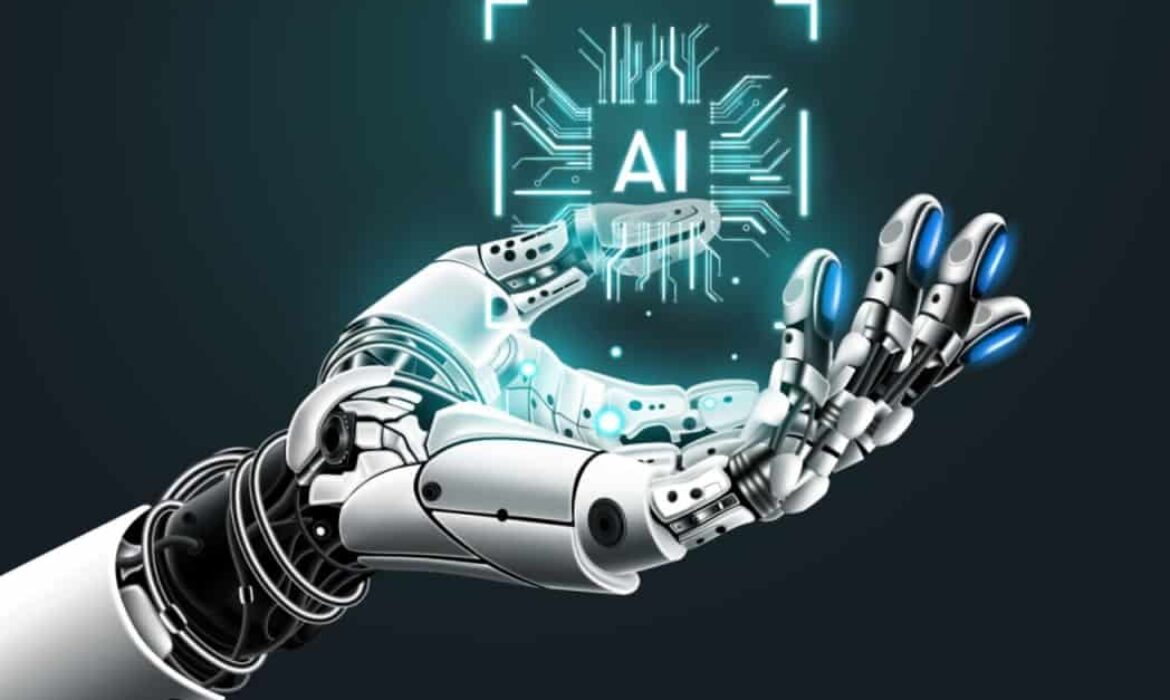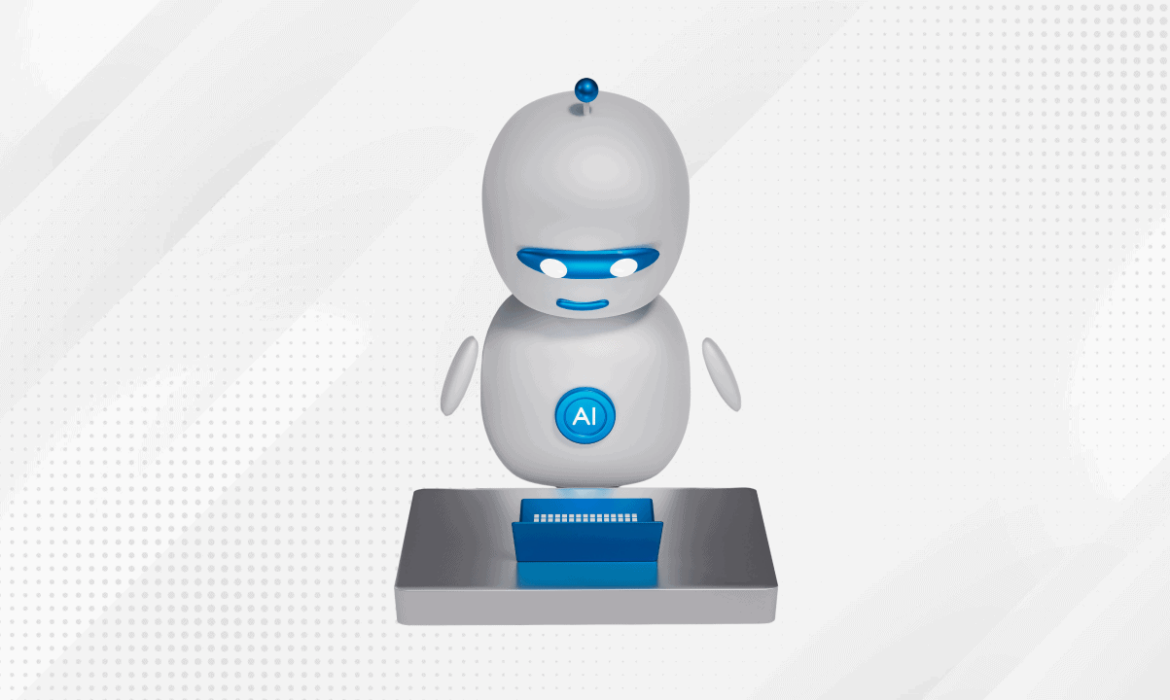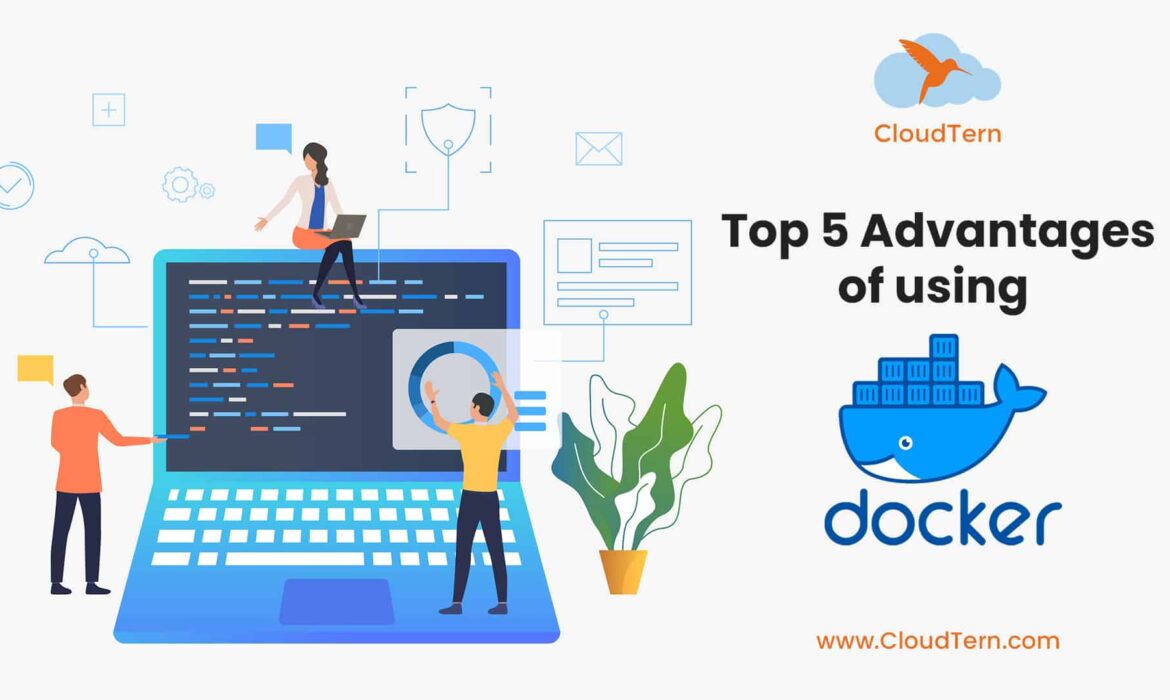Everything About the Updates : OpenAI_DevDay
Amidst the technological breakthroughs, OpenAI’s ChatGPT, built on the foundation of GPT-3.5, stands as a landmark in natural language processing. Introduced by OpenAI, it represents a progression from earlier models, showcasing advancements in deep learning and artificial intelligence. ChatGPT underwent iterative improvements, with valuable user feedback received during beta testing, reflecting OpenAI’s dedication to advancing conversational AI capabilities.Operating on a transformer neural network architecture, GPT-3.5 powers ChatGPT, employing unsupervised learning from diverse internet text to generate human-like responses. Trained to grasp patterns, context, and language nuances, it utilizes attention mechanisms for coherent text generation based on input prompts, establishing itself as a formidable conversational AI. Recently, ChatGPT for GPT-4 integrated voice and vision capabilities, including the cutting-edge DALL-E3 image model, a significant leap in visual processing. For enterprise users, ChatGPT Enterprise offers high-end features, ensuring security, expedited GPT-4 access, extended context windows, and tailored enhancements for professional settings, providing a secure, efficient, and feature-rich experience.
With a user base surpassing 2 million developers integrating ChatGPT across diverse applications, the platform records over 100 million weekly active users. Recognizing ChatGPT’s pivotal role in these users’ endeavors, maintaining their loyalty becomes a paramount business objective. This requires a proactive stance to identify and address any shortcomings, placing a central emphasis on elevating user satisfaction. Aligned with the need for ongoing information updates, this strategy acknowledges the evolving expectations of users over time. The unwavering commitment to this continuous improvement process underscores the platform’s dedication to remaining responsive to user needs within a dynamic environment.
What are the updates now?
Throughout its history of model launches, OpenAI has consistently prioritized exclusivity for developers. The newest addition to their lineup, GPT-4 Turbo, comes with six notable upgrades. This latest industry-driven model marks a significant leap forward in AI capabilities, introducing a host of advancements that redefine the landscape. Positioned as a more intelligent iteration in comparison to GPT-4, GPT-4 Turbo distinguishes itself with a range of key features.
Extended Context Length: With an impressive context length of 128,000 tokens, GPT-4 Turbo ensures heightened accuracy, staying up-to-date with information until its knowledge cutoff in April 2023.
Text-to-Speech Model: A new addition allows the generation of remarkably natural audio from text via API, offering six preset voices for users to choose from.
Custom Models: OpenAI collaborates closely with companies to develop exceptional custom models, facilitating diverse use cases through specialized tools.
Token Doubling: GPT-4 Turbo doubles the tokens per minute for all customers, making it easier to achieve more. Users can also request changes to raid limits and quotas directly in their API account settings.
Enhanced Control: Simplified JSON mode API calls empower developers to make multiple calls at once for reproducible outputs.
Improved World Knowledge: GPT-4 Turbo integrates advanced retrieval capabilities, enabling users to import knowledge from external documents or databases and mitigating concerns about outdated information.
New Modalities: Introducing DALL-E 3, GPT-4 Turbo seamlessly integrates vision and a new text-to-speech model into its API. This enables image inputs, generating captions, classifications, and analyses in six different modes, including Whisper v3.
Customization Boom: Building on the success of fine-tuning in GPT-3.5, GPT builders expand to 16k versions, empowering users to create custom models through specialized tools and a tailored RL post-training process.
Higher Rate Limits: GPT-4 Turbo boasts doubled rate limits, enhancing efficiency and responsiveness. This comprehensive suite of improvements establishes GPT-4 Turbo as a transformative force in the realm of artificial intelligence.
Copyright Shield
OpenAI staunchly supports its customers by covering the expenses incurred in legal claims related to copyright infringement, a policy applicable to both ChatGPT Enterprise and API. Despite its advanced capabilities, this model proves to be significantly more cost-effective than GPT-4, with a threefold reduction in input prompt token costs and a twofold decrease in output token costs.
In our pioneering GPT builder business model, customer protection takes center stage as we bear the legal claim defense costs. Our public and private Chat GPTs establish an industry benchmark, finely calibrated for optimal performance. They seamlessly integrate precise instructions, extensive knowledge, and swift actions, delivering an unparalleled user experience. This forward-thinking approach not only safeguards our customers but also harnesses cutting-edge AI technology to ensure efficiency and reliability. We are not merely redefining customer support; we are revolutionizing it, driven by a commitment to excellence and innovative technological solutions.
Does ChatGPT truly oppose Prompt Engineering?
Indeed, ChatGPT doesn’t possess an inherent opposition to prompt engineering; rather, it acknowledges the existence of this practice and the potential influence it can exert on the model’s behavior. OpenAI, the entity responsible for ChatGPT, appreciates the user community’s interest and creativity in experimenting with prompt engineering.
However, OpenAI emphasizes the importance of responsible usage, cautioning against manipulating the system in ways that could generate unsafe or biased outputs. The organization strives to strike a delicate balance between granting users the ability to customize their interactions and ensuring ethical, unbiased, and secure AI experiences.
In this pursuit of balance, OpenAI actively seeks user feedback, recognizing it as a valuable tool for refining the system. By consistently refining the model, OpenAI aims to enhance its behavior, address concerns arising from prompt engineering, and ultimately provide users with a more reliable and responsible AI tool. This collaborative approach underscores OpenAI’s commitment to fostering a community-driven, ethically sound environment for AI development and interaction.
Introducing GPTs: Understanding the potential of GPTs
Enthusiasts are crafting live AI commentators for video games such as League of Legends. In another scenario, a yoga instructor is leveraging image processing through their webcam, employing GPTbuilder to guide and provide real-time feedback during training sessions.
Moreover, GPTs are being employed to create stickers, forming an impressive and dynamic collection used in real-time. GPTs can also generate prompts for specific instructions when utilizing a custom model. Users have the ability to pre-sets a single assistant for a dedicated use case.
Furthermore, the visual capabilities of GPT, coupled with the Text-to-Speech (TTS) API, are harnessed for processing and narrating videos. This integration allows for a seamless blend of GPT’s visual prowess and audio narration, enhancing the overall video experience.
Custom Models
In the realm of GPT Custom models, users have the power to provide tailored instructions. By incorporating conversation starters such as Code interpreter, Web browsing, and DALL-E-3 for image generation, individuals can shape the assistant’s actions. Additionally, users can select specific functionalities within the assistant and have the option to store API data in long-term memory.
Moreover, users are granted the ability to seamlessly integrate external applications into the ChatGPT web interface. This empowers them to construct their own GPT extensions. Furthermore, envision an extension to this capability where multiple GPTs interact with one another. The possibilities are boundless, marking a significant stride towards mass adoption. Over time, the tangible results of this evolution are poised to become increasingly evident.
Summary and Reflection
In the wake of its recent updates, OpenAI is earning widespread acclaim and recognition for the substantial contributions it has made to the technological landscape. This recognition is particularly pronounced among users and, notably, resonates strongly within the developer community. The enhancements and innovations introduced by OpenAI are being hailed for their positive impact, exemplifying the organization’s unwavering commitment to advancing technology and addressing the evolving needs of its user base. This sentiment is especially pronounced among those actively engaged in software development.
The positive reception underscores OpenAI’s influential role as a trailblazer in the field, highlighting its dedication to pushing the boundaries of what is possible in technology. The acknowledgement and applause from the tech community serve as a testament to the effectiveness and relevance of OpenAI’s efforts, further solidifying its position as a leading force in shaping the future of artificial intelligence and related technologies.
“What makes Generative AI the top choice?”
History
Generative AI boasts a history that traces back to the mid-20th century. Initial forays in the 1950s and 60s focused on rule-based systems for text generation. However, a significant leap occurred in the 2010s with the emergence of deep learning. Milestones like the introduction of recurrent neural networks (RNNs) and the breakthrough of long short-term memory (LSTM) networks in 2014 propelled generative AI forward. The release of GPT-3 in 2020 represented a pivotal moment, showcasing increasingly sophisticated models capable of producing human-like text. This revolutionized natural language processing and creative content generation. One sterling example of generative AI’s prowess is OpenAI’s DALL·E. This cutting-edge model crafts images based on textual descriptions, showcasing AI’s ability to generate realistic, novel content. DALL·E underscores OpenAI’s commitment to pushing the boundaries of artificial intelligence, unlocking new creative avenues, and fundamentally reshaping how we interact with and generate visual content in the digital realm.
Mechanism
Generative AI, as demonstrated by GPT-3.5, operates through a sophisticated mechanism encompassing two key phases: training and inference. During the training phase, the model is exposed to an extensive and diverse dataset of text, which it uses to adjust its internal parameters and weights. This process enables it to grasp the intricacies of language, encompassing grammar, semantics, and context. By analyzing vast text samples, the model learns to recognize patterns, associations, and relationships between words and phrases, thereby acquiring a comprehensive understanding of language structure.
In the inference phase, the AI applies its learned knowledge to generate text. When provided with an initial prompt, it predicts the most likely next word or sequence of words based on the context established by the prompt and its internal knowledge. This interplay between training and inference is a dynamic and iterative process that empowers generative AI to produce coherent and contextually relevant content. As a result, it can mimic human-like text generation across a wide range of applications, from natural language understanding to creative content creation and more.
Limitations in its mechanism
Generative AI, while powerful, has notable limitations while producing content.
- It can produce biased or offensive content, reflecting biases in the training data. It may lack creativity, often producing content that mimics existing data. Ethical concerns arise due to its potential to generate deep fakes and misinformation.
- It requires substantial computational resources, limiting accessibility. Long input prompts can lead to incomplete or irrelevant outputs. The models might not fully understand context and produce contextually inaccurate responses.
- Privacy issues may arise when using sensitive or personal data in generative AI applications, necessitating careful handling of information.
Applications
Natural Language Generation (NLG) Generative AI excels at crafting human-like text, automating content creation for news articles, reports, marketing materials, and chatbots. This ensures consistent, high-volume content production.
Computer-Generated Imagery (CGI) Within the realms of entertainment and advertising, generative AI generates realistic graphics and animations, reducing the need for labor-intensive manual design and enabling cost-effective special effects.
Art and Design Artists leverage AI for creating unique artworks, while designers use it for layout recommendations and logo generation, streamlining the creative process.
Healthcare With Generative AI, doctors can instantly access a patient’s complete medical history without the need to sift through scattered notes, faxes, and electronic health records. They can simply ask questions like, ‘What medications has this patient taken in the last 12 months?’ and receive precise, time-saving answers at their fingertips.
Autonomous Systems In self-driving vehicles and drones, AI generates real-time decisions based on sensory input, ensuring safe and efficient navigation.
Content Translation AI bridges language gaps by translating text and speech, facilitating cross-cultural communication and expanding global business opportunities.
Simulation AI generates realistic simulations for training pilots, doctors, and other professionals, providing a safe and effective environment for skill development.
Generative AI is revolutionizing diverse fields by streamlining operations, reducing costs, and enhancing the quality and personalization of outcomes.
Challenges
Generative AI has indeed transformed from a science fiction concept into a practical and accessible technology, opening up a world of possibilities. Yet, it does come with its set of challenges, albeit ones that can be managed with the right approach.
Ethical Concerns The primary challenge revolves around the ethical use of generative AI, which can produce misleading content like deepfake videos. Developers and organizations are actively working to establish ethical guidelines and safeguards to ensure responsible AI application and adherence to ethical standards.
Bias in Generated Content Generative AI models, trained on extensive datasets, can inherent biases present in the data, potentially leading to generated content that reinforces stereotypes or discrimination. To combat this issue, researchers are dedicated to devising techniques for bias reduction in AI models and advocating for more inclusive and varied training data.
Computational Resources Training and deploying generative AI models, especially large ones, requires substantial computational resources. This can be a barrier to entry for smaller organizations or individuals. Cloud-based services and pre-trained models are helping mitigate this challenge, making generative AI more accessible.
In summary, while generative AI poses challenges, it’s an evolving field with active solutions in progress. Staying informed, following ethical guidelines, and utilizing the expanding toolset enables individuals and organizations to effectively tap into generative AI’s creative potential, pushing digital boundaries.
In a nutshell, Generative AI’s horizon is defined by an unceasing progression in creativity, personalization, and effective problem-solving. Envisage the emergence of ever more intricate AI models effortlessly integrated into our daily routines, catalyzing revolutionary shifts in content creation, healthcare, art, and various other domains. This ongoing transformation is poised to fundamentally redefine our interactions with technology and information, ushering in a future where AI assumes an even more central and transformative role in our daily experiences.
Top 3 Advantages of Implementing Chatbot with ChatGPT
Why Chatbot again when ChatGPT is ruling over?! Or why not their combination?! ChatGPT, a revolutionary tool stands for a generative pre-trained transformer which is an interactive platform through chat, designed to give comprehensive answers whereas chatbots are plugins using Natural Language Processes for any business or website to interact with.
Chatbots are typically pre-programmed with a limited set of responses, whereas ChatGPT is capable of generating responses based on the context and tone of the conversation. This makes ChatGPT more personalized and sophisticated than chatbots. Both ChatGPT and chatbots are conversational agents designed to interact with humans through chat giving them real experience. However, there are some them in various factors.
Differences between ChatGPT and Chatbot
Efficiency and speed
Chatbots can handle a high volume of user interactions simultaneously with fast responses. They quickly provide users with information or assist with common queries, reducing wait times which improves overall efficiency. In contrast, ChatGPT generates responses sequentially and has limited scalability for handling large user bases.
Task-specific expertise
Chatbots can be built with specialized knowledge or skills for specific industries or domains. For instance, a chatbot in healthcare can provide accurate medical advice or help schedule appointments, leveraging its deep understanding of medical protocols. ChatGPT, while versatile, may not possess such specialized knowledge without additional training.
Control over responses while user interaction
Chatbots offer businesses more control over the responses and images they want to project. As a developer, you can design, curate, and review the responses generated by a chatbot, ensuring they align with your brand voice and guidelines. ChatGPT, although highly advanced, generates responses based on a large dataset and may occasionally produce outputs that are off-topic or not in line with your desires.
Improved conversational capabilities
Integrating ChatGPT into a chatbot, can leverage its advanced natural language processing abilities. ChatGPT excels at understanding context, generating coherent and human-like responses, and handling more nuanced conversations. This can enhance the overall conversational experience for users interacting with the chatbot.
Advantages Chabot with ChatGPT
Richer and more engaging interactions
ChatGPT’s ability to understand and generate natural language responses can make the interactions with the chatbot feel more realistic and engaging. The chatbot can provide personalized and contextually relevant responses, leading to a more satisfying user experience.
Continuous learning and improvement
ChatGPT is designed to learn from user interactions, allowing it to improve its responses over time. Integrating ChatGPT with a chatbot enables the system to continuously learn and adapt based on user feedback. This means that the chatbot can become smarter and more effective at understanding and addressing user needs.
Flexibility and scalability
ChatGPT can be integrated with various chatbot platforms and frameworks, offering flexibility in implementation. ChatGPT is constantly learning, which means that it can improve its responses over time by building a chatbot for customer support, virtual assistants, or other applications.
Integration of ChatGPT into the back end of the chatbot requires to implementation of their combination. Whenever a user enters a message, the chatbot would pass that message to ChatGPT, which would generate a response based on its machine-learning algorithms using the cloud services. The chatbot would then display the response to the user. This approach can result in a more natural and intuitive conversation between the user and the chatbot, as ChatGPT is capable of generating responses that are more human-like.
In summary, ChatGPT is a more advanced and intuitive conversational AI, it may not always have access to real-time data or provide the most up-to-date information on rapidly changing events than traditional chatbots. But it is capable of understanding the nuances of human language, context, and intent, which makes it a more effective tool for customer service, personal assistants, and other applications while generating responses to user input, while the chatbot serves as the interface through which users can interact with the system.
IoT for Telecommunications
 The telecommunication sector is going through a tricky phase right now. The advent of the 5G technology augmented with the software-defined virtual networks is disrupting the industry on one side, opening a new landscape of opportunities. On the other side, there is tough competition from VoIP-based platforms such as Skype and Zoom. With an increased commoditization, telecoms are able to cut prices and stay in the competition. However, they had to take a hit on the Average Revenue per User (ARPU). Another important challenge is customer churn. With shrinking IT budgets and high competition, customer retention becomes a challenge for most telecoms. This is where IoT comes to the rescue.
The telecommunication sector is going through a tricky phase right now. The advent of the 5G technology augmented with the software-defined virtual networks is disrupting the industry on one side, opening a new landscape of opportunities. On the other side, there is tough competition from VoIP-based platforms such as Skype and Zoom. With an increased commoditization, telecoms are able to cut prices and stay in the competition. However, they had to take a hit on the Average Revenue per User (ARPU). Another important challenge is customer churn. With shrinking IT budgets and high competition, customer retention becomes a challenge for most telecoms. This is where IoT comes to the rescue.
How does IoT help Telecom Companies?
IoT technology is rapidly evolving. Telecoms can take full advantage of IoT networks as they already possess the infrastructure in the form of mobile phone towers and internet cables. When 5G is added to it, telecoms can build high-speed networks with low latency and accommodate a wide range of IoT devices wherein seamless connection is established between interconnected devices and people in the massive ecosystem. Telecoms can build IoT platforms that enable customers to connect and manage multiple endpoints and run IoT apps while managing the infrastructure from a central dashboard.
IoT with 5G offer high-speed networks with expanded bandwidths and low latencies to run real-time processes. Energy efficiency is a big advantage as companies can run millions of connected devices with minimal power consumption. With an IoT platform, telecoms can reduce churn while gaining new customers to increase revenues. Moreover, they can create new job opportunities and thereby contribute to the growth of the local economy as well.
IoT Use Cases for Telecom
While the basic functionality of IoT for telecoms is to provide connectivity services for the customer IoT devices, the use cases can be extended to industry-specific end-user apps as well.
IoT in home automation enables customers to control electronic devices at home using mobile apps or voice assistants.
Remote Asset Monitoring of physical assets such as orders, vehicles, patients etc. using a mobile application in real-time, benefitting healthcare, retail, logistics and several other industries.
Telecoms can perform Data Storage and Management (backend processes) for client applications.
Data Analytics services comprising storage of IoT-generated data and delivering actionable insights to clients using AI/ML algorithms.
Telecoms can offer cloud-based PaaS and SaaS services wherein clients can use IoT-based platforms to develop, deliver and manage software.
Build smart cities with autonomous vehicle systems
Choosing the Right IoT Platform
As the IoT industry is still in the nascent stage and evolving, telecoms have to either build a custom IoT platform from scratch or customize a public cloud IoT offering. When you choose to build a custom IoT platform, you get the flexibility and feature-set that tightly integrates with your existing infrastructure. However, it is a time consuming and costly affair. In addition to development costs, you should also consider the fact that you need to build and manage your own cloud. Alternatively, telecoms can customize AWS IoT or Azure IoT platforms quickly and reduce initial investment costs. The advantage of public cloud IoT platforms is that you can use extensive network services that are secure and reliable. However, you’ll incur cloud usage costs.
The Bottom-line
Telecoms struggling with increased competition and reduced margins can tap into new revenue streams by exploring IoT capabilities for the telecom industry. Not only can telecoms reduce customer churn but they can expand their services and solutions to gain a competitive edge in the market with IoT solutions.
CloudTern is a leading provider of IoT-based telecom solutions. Be it developing an end-to-end IoT platform or providing IoT consulting services, CloudTern is here to help!
Call us right now to fly high on the IoT plane!
Top 5 Advantages of using Docker
 As businesses are aggressively moving workloads to cloud environments, containerization is turning out to be a necessity for every business in recent times.
As businesses are aggressively moving workloads to cloud environments, containerization is turning out to be a necessity for every business in recent times.
Containerization enables organizations to virtualize the operating system and deploy applications in isolated spaces called containers packed with all libraries, dependencies, configuration files etc.
The container market is rapidly evolving. According to MarketsandMarkets, the global application containerization market earned a revenue of $1.2 billion in 2018 and is expected to touch $4.98 billion by 2023, growing at a CAGR of 32.9% during 2018 and 2023.
The Dominance of Docker
The containerization market is dominated by Docker. In fact, it was Docker that made the containerization concept popular. According to Docker, the company hosts 7 million+ applications with 13 billion+ monthly image downloads and 11 million+ developers involved in the process. Adobe, Netflix, PayPal, Splunk, Verizon are some of the enterprises that use Docker.
Virtual Machine Vs Docker
Here are the top 5 benefits of using Docker:
1) Consistent Environment
Consistency is a key benefit of Docker wherein developers run an application in a consistent environment right from design and development to production and maintenance. As such, the application behaves the same way in different environments, eliminating production issues. With predictable environments in place, your developers spend more time on introducing quality features to the application instead of debugging errors and resolving configuration/compatibility issues.
2) Speed and Agility
Speed and agility is another key benefit of Docker. It allows you to instantly create containers for every process and deploy them in seconds. As you don’t have to boot the OS, the process is done lightning fast. Moreover, you can instantly create, destroy, stop or start a container with ease. By simply creating a configuration file using YAML, you can automate deployment and scale the infrastructure at ease.
Docker increases the speed and efficiency of your CI/CD pipeline as you can create a container image and use it across the pipeline while running non-dependant tasks in parallel. It brings faster time to market and increases productivity as well. The ability to commit changes and version-control Docker images enable you to instantly roll back to an earlier version in case a new change breaks the environment.
3) Efficiently Management of Multi-Cloud Environments
Multi-cloud environments are gaining popularity in recent times. In a multi-cloud environment, each cloud comes with different configurations, policies and processes and are managed using different infrastructure management tools. However, Docker containers can be moved across any environment. For instance, you can run a container in an AWS EC2 instance and then seamlessly move it to a Google Cloud Platform environment with ease. However, keep in mind that data inside the container is permanently destroyed once the container is destroyed. So, ensure that you back up the required data.
4) Security
Docker environments are highly secure. Applications that are running in Docker containers are isolated from each other wherein one container cannot check the processes running in another container. Similarly, each container possesses its own resources and doesn’t interact with the resources of other containers. They use the resources allocated to them. As such, you gain more control over the traffic flow. When the application reaches its end of life, you can simply delete its container, making a clean app removal.
5) Optimized Costs
While features and performance are key considerations of any IT product, Return on Investment (ROI) cannot be ignored. The good thing with Docker is that it enables you to significantly reduce infrastructure costs. Right from employee strength to server costs, Docker enables you to run applications at minimal costs when compared with VMs and other technologies. With smaller engineering teams and reduced infrastructure costs, you can significantly save on operational costs and increase your ROI.







